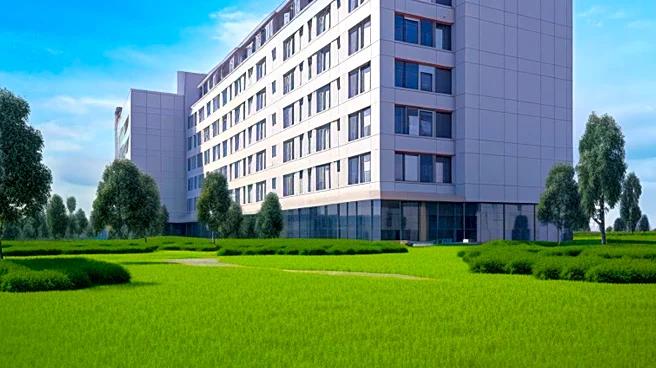What's Happening?
Recent studies have highlighted the potential health risks associated with air conditioning systems, particularly in office environments. Sick building syndrome, characterized by symptoms such as headaches, dizziness, and respiratory issues, has been linked to prolonged exposure to air-conditioned spaces. A study from India found that individuals working in air-conditioned offices experienced more symptoms consistent with sick building syndrome compared to those in non-air-conditioned environments. Malfunctioning air conditioners can release allergens, chemicals, and microorganisms, contributing to these health issues. Additionally, poorly maintained systems can harbor bacterial pathogens like Legionella pneumophila, which causes Legionnaires' disease, a serious lung infection.
Why It's Important?
The findings underscore the importance of proper maintenance and functioning of air conditioning systems to prevent health risks. Sick building syndrome can lead to decreased productivity and increased absenteeism in workplaces, impacting economic performance. Furthermore, the potential for air conditioning systems to spread infections highlights the need for stringent health and safety protocols, especially in communal spaces like hospitals and offices. Ensuring clean and well-maintained air conditioning systems can mitigate these risks and improve indoor air quality, benefiting public health and workplace efficiency.
What's Next?
Organizations and building managers may need to implement regular maintenance schedules for air conditioning systems to prevent the spread of infections and improve air quality. Health authorities could issue guidelines for the safe operation of air conditioning units, emphasizing the importance of clean filters and proper humidity control. As awareness of sick building syndrome grows, there may be increased demand for air quality monitoring and improved ventilation systems in workplaces and public buildings.
Beyond the Headlines
The issue of sick building syndrome also raises questions about the design and construction of modern buildings, which often rely heavily on air conditioning. There may be a shift towards more sustainable building practices that prioritize natural ventilation and reduce dependency on air conditioning. This could lead to innovations in architectural design and building materials that enhance indoor air quality and reduce health risks.












